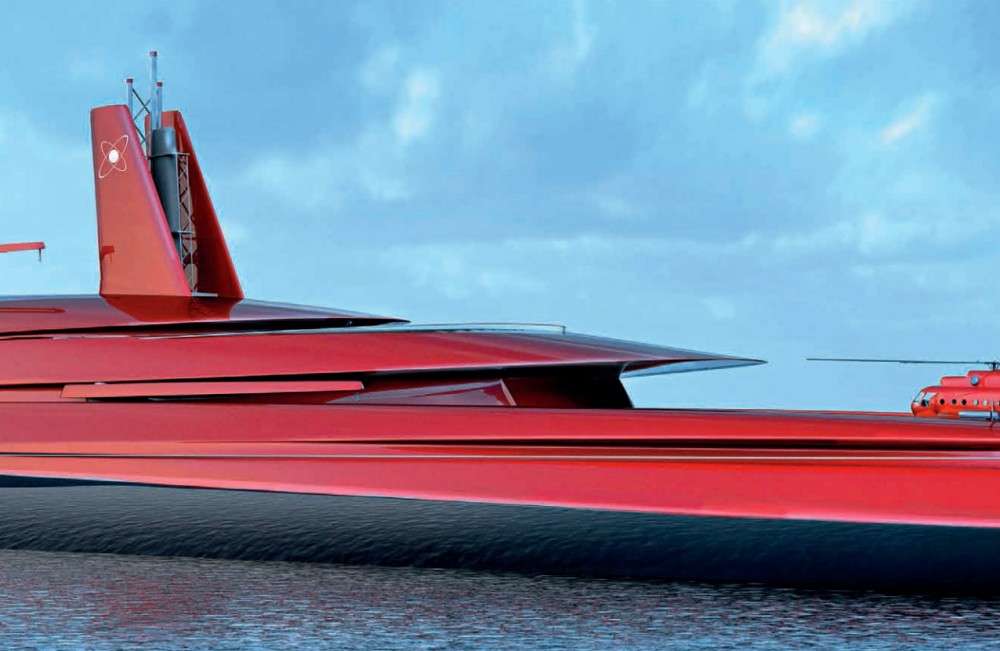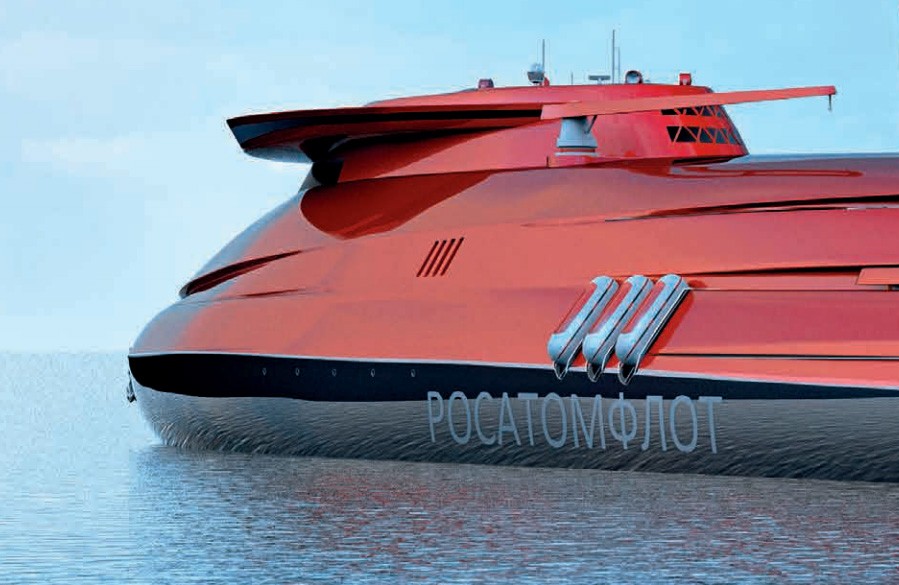Russian officials have again revived a cherished sea shanty about a goliath nuclear icebreaker the country may or may not decide to build as early as next year – or the year after.
Russian officials have again revived a cherished sea shanty about a goliath nuclear icebreaker the country may or may not decide to build as early as next year – or the year after.
Last week, references to it rose to something slightly more than rumor when Vasily Osmakov, Russia’s deputy minster for trade and industry, told an Artic conference in Arkhangelsk that the ship was a project “marked with a star” on a list of things to be discussed in 2018 or 2019.
The idea for the Lider, as the fanciful ship is called, has been floating around for the last couple of years, and first surfaced in an official capacity in December of 2015 in the pages of a trade magazine published by Russia’s Unified Shipbuilding corporation.
The cover of the magazine’s 24th edition featured a mock-up of the streamlined vessel, viewed from the point of view of a landing helicopter, steaming through fluffy islands of ice like an oligarch’s prized yacht.
 An artist's rendition of the Lider and its helipad. (Source: oaoosk.ru)
An artist's rendition of the Lider and its helipad. (Source: oaoosk.ru)
An article inside sketched out its massive dimensions, giving it a deadweight of 55,000 tons, and a length that was 50 meters longer than Russia’s biggest icebreaker yet – the Arktika – whose hull put to water last year, but which hasn’t itself yet been launched.
The Lider would also be able to ride its as-yet-to-be-developed RITM-400 reactors through five meters of ice, and cut a swathe for following ships measuring 50 meters wide.
 The Lider's debut on the cover of the Universal Shipbuilding Company's magazine.
Credit: oaoosk.ru
The Lider's debut on the cover of the Universal Shipbuilding Company's magazine.
Credit: oaoosk.ru
Vyacheslav Ruksha, chief of Russia’s nuclear icebreaker fleet Atomflot, reassured the magazine’s readers that climate change was just a vogue mass neurosis, and that ice would be around for the Lider to break for years and years to come.
“There’s ice enough for all of us,” he said in the article.
“Talk of climate change has become fashionable. However, fashion comes and goes. It is all very funny.”
Still, the space-age looking vessels lurked at the corners of the popular conscience until Dmitry Rogozin, Russia’s arctic-obsessed deputy prime minister, spoke up a year later to tout progress that the Krylov design bureau was making on drawing up the vessel.
“We will be able the break the ice at any time, in any season, in all kind of weather, under the most uncomfortable ice conditions,” he boasted to the official Tass news agency.
Izvestiya, another official outlet, got in on the act and reported that the Lider’s cruising speed would be 14 knots, and offered other details on its unique hull structure that would lay waste to ice like no other.
For sometime after, the Lider became the great white whale on which the harpoons of all other icebreaker construction were trained. It was bigger, sleeker, and sexier than anything being built, and seemed to embody all the hopes of a new icebreaker age.
Last June, however, the feverish fanfare ground to a halt as Russia announced huge budget slashes to its Arctic Program, a development scheme through 2020, which zeroed out the funds for the $1.4 billion vessel.
Rogozin cooled off on his reliable mythologizing and conceded that building the vessel would make little sense unless funds could be found to build several of them.
Coincidentally, a series of difficulties stemming from sanctions have thrown completion of the Arktika, and its younger brother the Sibir, whose hull was recently floated in St Petersburg, off schedule, pushing them at least two years past their assumed completion dates.
Each of these vessels will, when completed, cost $1.8 billion a piece, and will spend the first 20 years of their existence servicing fossil fuel interests that sanctions have likewise hobbled.
In these circumstances, that the notion that the Lider will ever be built is doubtful. All the same, discussions of it serve as a barometer on how hopeful the Russians are about the icebreakers they are already building.
And how optimistic are they? Well, they’ll get back to you next year – or the year after.






